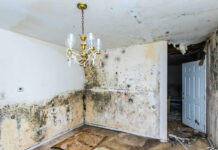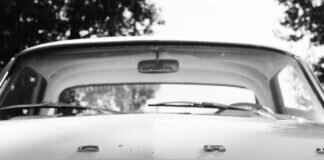The weather alert system and runway lights weren’t working at a foggy San Diego airport, where a private jet was planning to land before it crashed into a neighborhood, but the cause of the crash remains unclear, officials said Friday. Dan Baker of the National Transportation Safety Board also said investigators haven’t determined a cause of Thursday’s crash that likely killed all six people aboard. Baker said the weather alert system at Montgomery-Gibbs Executive Airport was down at the time of the crash due to an unrelated power surge. He said the pilot instead got weather information from Marine Corps Air Station Miramar about 4 miles (6.44 kilometers) north, but he was aware of the fog. The runway lights were also down. The plane crashed about 2 miles (3.22 kilometers) from the airport.
Music talent agent Dave Shapiro, and two unnamed employees of the music agency he co-founded, Sound Talent Group, were among the dead along with the former drummer for metal band The Devil Wears Prada. Shapiro, 42, had a pilot’s license and was listed as the owner of the 1985 Cessna 550 Citation that plowed into the neighborhood of U.S. Navy housing shortly before 4 a.m. Thursday. The crash added to a long list of aviation disasters this year. They include a midair collision that killed 67 people near Washington, D.C., in January, an airliner that clipped another plane in February while taxiing at the Seattle airport and a sightseeing helicopter that broke apart and crashed into the Hudson River between New York City and New Jersey last month, killing six people.
Federal officials have tried to reassure travelers that flying is the safest mode of transportation, which statistics support. But a cascade of aviation mishaps has drawing increasing attention. Radio transmissions from the flight’s final moments provide some insight into the weather conditions that the pilots faced and what it’s like to land at Montgomery-Gibbs Executive Airport. Shapiro’s aircraft was trying to land in foggy weather at Montgomery-Gibbs Executive Airport when it struck power lines about 2 miles (3.2 kilometers) southeast of the airfield, Elliot Simpson of the National Transportation Safety Board.
The flight took off from Teterboro, New Jersey, near Manhattan, at about 11:15 p.m. Wednesday and made a fuel stop in Wichita, Kansas, before continuing on to San Diego. That overnight schedule wouldn’t be allowed for an airliner under federal crew rest rules, but those regulations don’t apply to private planes. Former NTSB and FAA crash investigator Jeff Guzzetti said he thinks the dense fog and fatigue after Shapiro flew all night long were likely factors in the crash. “This accident has all the earmarks of a classic attempt to approach an airport in really bad weather and poor visibility,” Guzzetti said. “And there were other airports that the crew could have gone to.” Fragments of the plane were found under power lines that are about a half block from the homes. It then lost a wing on the road directly behind the homes. Guzzetti said even if the plane had missed the power lines it may have still crashed because it was coming in too low in the fog.














